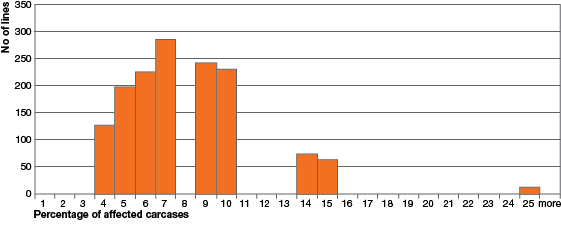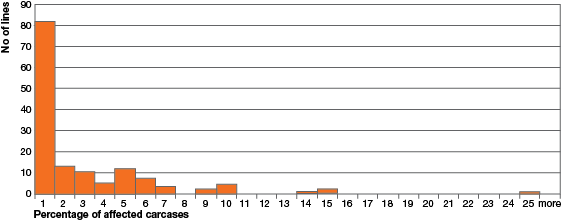Cheesy gland in Victorian sheep
Just how widespread 'cheesy gland' (properly known as caseous lymphadenitis, or CLA) is in Victorian sheep flocks is shown by abattoir surveillance data (Figures 1 and 2).
These data are collected by the National Sheep Health Monitoring Project using national industry body funding, and individual results are beginning to be returned to producers.
CLA is predominantly a disease of adult sheep, as infections develop at a slow rate. All lines of adult Victorian sheep inspected have at least 4 per cent of the line infected (see Figure 1). The main cost of CLA is at slaughter, through carcase trimming so that the meat does not contain 'cheesy' abscesses.

In general, lambs do not have as much CLA (see Figure 2). Only 4 per cent of all lines of lambs inspected have CLA.

CLA is spread when the abscesses discharge pus that can contaminate wounds (such as shearing cuts), or when sheep with lung abscesses cough over other sheep. It is contracted either through cuts, or through infection of mucous membranes in the mouth or nostrils. In the first year of infection, sheep will produce 7 per cent less wool but show few signs, apart from the abscesses visible on the outside of their bodies.
CLA can be readily prevented by vaccinating against the disease, using products such as '6-in-1' or '3-in-1' vaccines. Sheep need to be vaccinated twice as lambs, then annually. It is best to vaccinate just before high-risk periods, such as shearing.
Robert Suter, Statewide Veterinary Officer — Sheep, Attwood